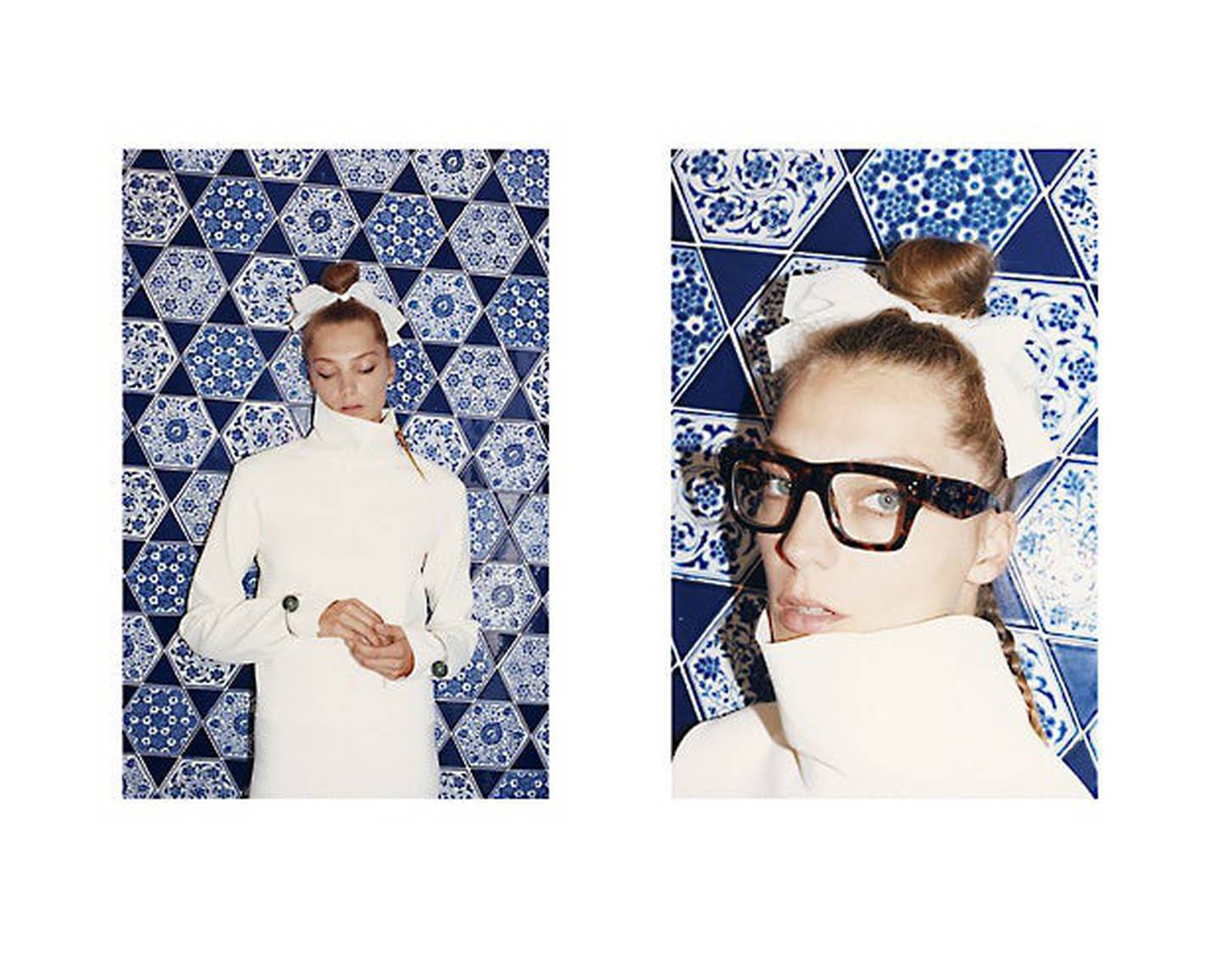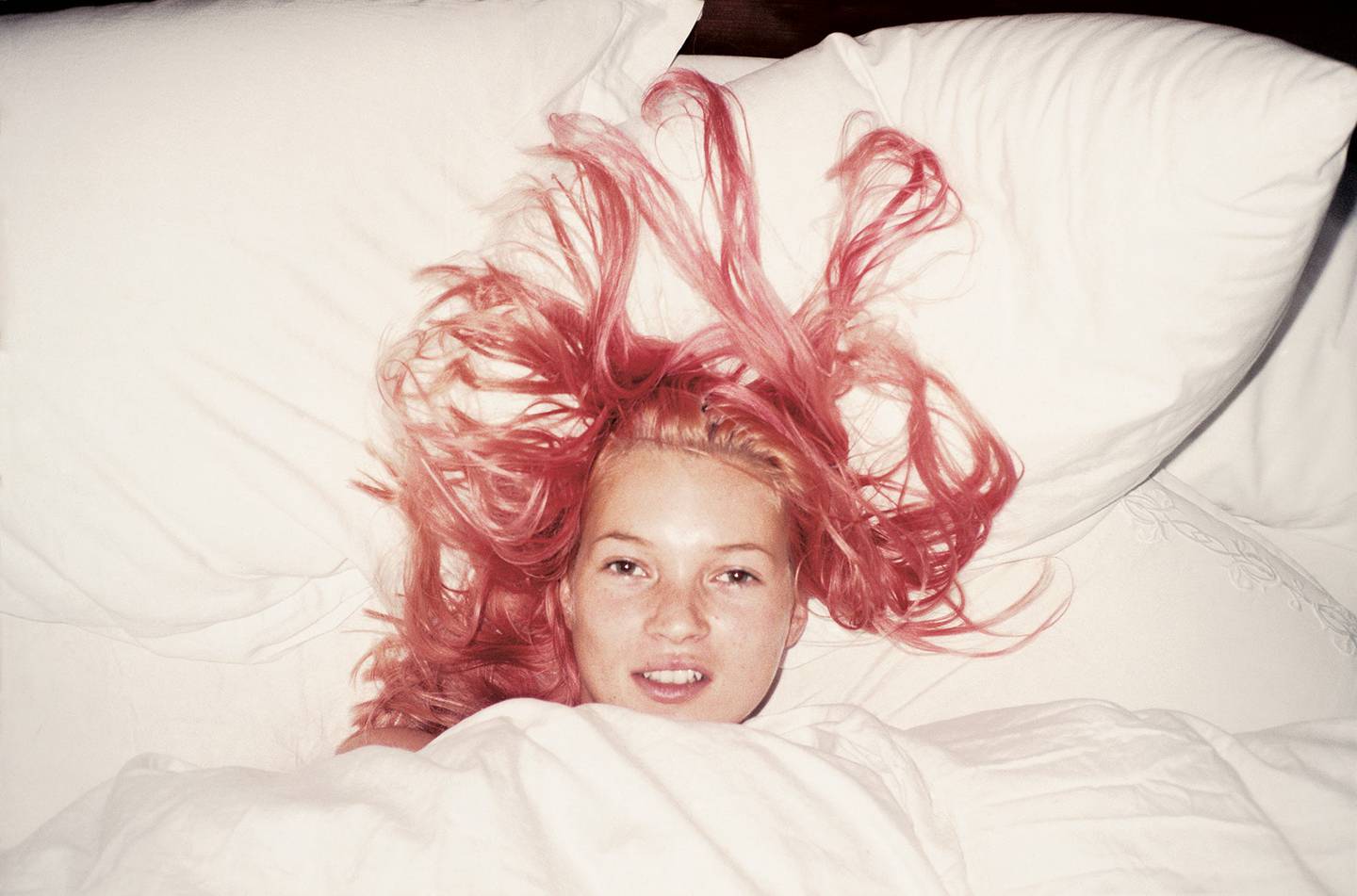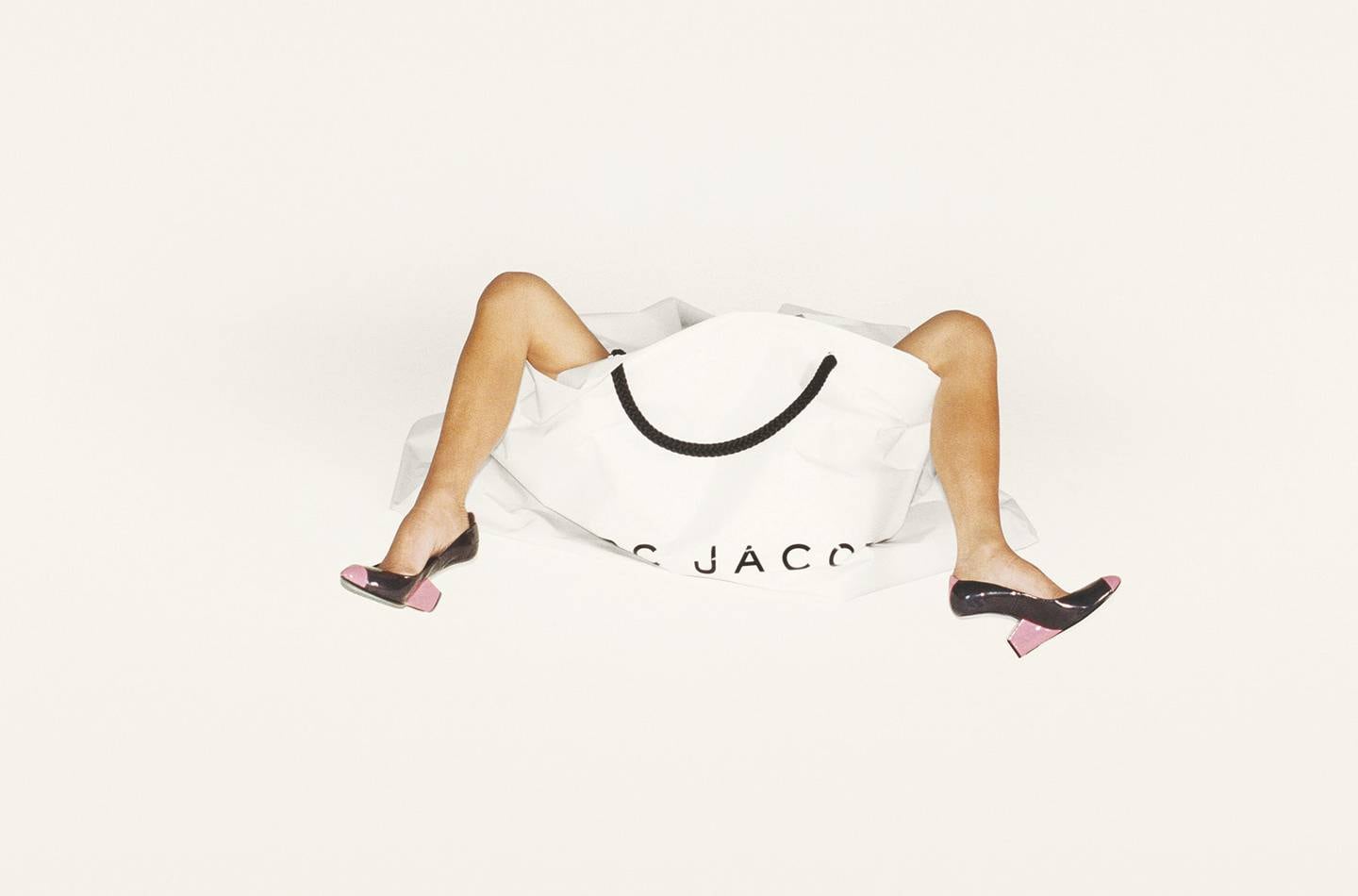Teller at present shoots promoting campaigns for Louis Vuitton, Céline and Vivienne Westwood, amongst others, and has contributed to just about each necessary vogue journal within the final 20 years. However with a relentless stream of books and exhibitions, he’s additionally one of many uncommon vogue photographers to have earned equal recognition as an artist. In keeping with Teller, his two modes of operation type a mutually enriching loop. “My very own work, the books and exhibitions, naturally feed into my vogue work. And, conversely, the style work supplies me with concepts for my private tasks.” In actual fact, his many e-book tasks — whose topics vary from his beloved son Ed to the sport of soccer, a significant Teller obsession — are a key a part of what retains him enthusiastic about vogue. “I’ve to take day trip, take away myself and do one thing else, different issues that excite me in life. Photographing vogue on a regular basis can be lifeless boring.”

Teller’s work is routinely described as ‘uncooked,’ ‘stark’ and ‘overexposed,’ nevertheless it may equally be described as existential, touching and exact. He explores an octopus on a mattress with the identical exactitude he dedicated to Charlotte Rampling and Raquel Zimmermann, bare on the Louvre in 2009. (For the shoot, the world’s most well-known museum turned off its surveillance cameras to guard the privateness of the themes.) Teller, himself, describes his aesthetic as “direct and romantic and brutal on the similar time.” And, certainly, from the tenderness of the photographs of the photographer’s mom Irene wandering by means of the woods (2012) to the graphic sexuality of his footage of Kristen McNemany (together with, most famously, a 1996 picture that includes the mannequin with the phrase ‘Versace’ drawn in a coronary heart on her chest) his oeuvre covers the total spectrum of human expertise. Combining a renegade charisma with a gifted eye and finely tuned sense of methods to assemble a picture, Teller took the so-called ‘grunge’ aesthetic of the Nineteen Nineties and elevated it into one thing private and novel, directly simple and poignant and, within the case of his industrial vogue work, relatable but ultra-desirable.

Teller’s trajectory is inseparable from his selection to depart his native Germany for London in 1986, after learning images in Munich for 2 years. His fundamental goal, he says, was to keep away from navy service and be taught English: “America was too far and I had a automotive.” So Teller, aged 22, drove to London. “I solely knew it was foggy, it rained loads and Edgar Wallace books and movies, however I used to be determined to flee the military and London appeared like the one approach out,” he says of the town the place he has now lived for 29 years.
Teller began out working for file labels, taking pictures album covers (together with the sleeve for Sinead O’Connor’s hit single ‘Nothing Compares to You’). He by no means aspired to work in vogue, however rode a wave of latest British youth tradition magazines (which linked artwork, vogue and music) into the business. Specifically, publications like i-D and The Face grew to become the right automobile for Teller’s idiosyncratic sensibility.
If you happen to ask a consumer or topic to do what’s in your head, it really sounds extremely silly. However the end result shouldn’t be silly in any respect.
Teller’s first full vogue story was revealed in Enviornment Homme Plus within the mid-Nineteen Nineties. “[Working at Arena Homme Plus] was an important alternative and studying curve for me. I learnt methods to do a industrial job, methods to do a portrait, to be on time. [Before] I had been very naive in regards to the teamwork and professionalism it takes to succeed.”
As Teller factors out, the scene that nurtured him was greater than a mere skilled milieu. The band of stylists, designers, editors and musicians that he fell into — an eclectic coterie that included folks like Judy Blame, Neneh Cherry and up-and-coming stylist Venetia Scott — ran collectively socially and supported one another emotionally. “It was mesmerising, I’ve by no means seen something prefer it and I’m not certain that form of group exists in the present day. There was a sure innocence to it, of simply desirous to do these footage or these tales, say issues we thought have been necessary about these new garments that have been being made. And, you had time.”

Scott grew to become Teller’s girlfriend in 1990 and collectively the pair began producing bold editorials that stood out for his or her opposition to the floor glamour of the Eighties. Although they have been meticulously composed, their message learn as extra genuine and carried a disaffected perspective that was new in vogue. When Scott went on journeys to Paris to see the style collections of rising abilities like Martin Margiela and Helmut Lang, Teller accompanied her, triggering his curiosity about what went on behind the scenes and steering his profession an increasing number of in the direction of the business.
In his typical dead-serious but humorous method, Teller recollects his first encounter with Lang, in 1993, as a Zoolander-like assembly between two kindred mavericks within the unique land of vogue. “I used to be this lonesome German man and located one other humorous German-speaking dude who stood out on this world, making nice vogue in Paris that everybody was going loopy about. We immediately favored one another.”
The assembly led to an 11-year collaboration between Teller and the Austrian designer, the spine of which is a collection of backstage photographs. Whereas far much less recognized than his celeb portraits and extra brazen vogue work, amongst vogue cognoscenti these photographs are revered and thought of to be amongst Teller’s finest work.
Rising up in a working-class family in a small Bavarian city, Teller says he had “no cultural training in any respect within the strict sense. My freedom was at all times to go play soccer and play within the woods. However at one level my older cousin began coming dwelling with jazz data. They’d these nice file covers and I actually obtained into jazz. In fact, this was parallel to my curiosity in Candy, Black Sabbath and Led Zeppelin, in addition to heavy steel, which I obtained into after I was 13.”
“Truly — and that is simply occurring to me now — [Munich jazz label] ECM had these superb file covers that I’d stare at endlessly after I was an adolescent. They’d an unrelated {photograph} surrounded by a white border with the artist’s title, the album title and the title of the label written on it.” Teller will get excited connecting the dots he says he wasn’t consciously conscious of earlier than we communicate.
A seemingly random picture surrounded by huge expanses of clean web page is, in fact, one thing of a Teller trademark, denoting, particularly, his 15-year run (1998 to 2013) taking pictures advert campaigns for Marc Jacobs. Teller talks fondly about working with Jacobs. “Identical to with Helmut, Marc and I understood one another immediately. We each had this complete curiosity in tradition and other people, so we grew to become mates.” Within the early years, Teller says he labored for Jacobs totally free. “However I wished to do it, as a result of it was very inspiring and super-exciting.” In trade, nonetheless, he requested for full artistic management of the advertisements. “I stated, if I’m not getting paid, I’m accountable for how massive the kind is, the format, if there is a body across the image, what number of footage are used and it’ll say ‘Claudia Schiffer’ — or whoever was featured — ‘photographed by Juergen Teller.'”
Teller isn’t shy in regards to the wide-reaching influence of the advertisements, which epitomised the model of bohemian New York cool that Marc Jacobs grew to become recognized for and featured the likes of Kim Gordon and Cindy Sherman doing alluringly banal issues. “By designing these advertisements myself, I influenced a complete slew of magazines for the subsequent 20 years. Earlier than we did it, there have been no white borders, all the things was tremendous messy and busy — all advertisements have been full-bleed.”

The Marc Jacobs advertisements are additionally a great instance of his favoured methods of working. Whereas a few of the photographs counsel that they have been spur-of-the-moment pictures, in actual fact, “all the things is totally thought by means of and deliberate.” Every picture is the results of communication. “The best way you get to a great {photograph} is thru dialog. There may be at all times a critical dialogue, of who can be a great topic or mannequin, the place we must always we shoot. It’s at all times a protracted dialogue. Nicely, typically it’s fast and evident and typically it might drag itself out.”
Even when the ultimate picture depicts a lighthearted, foolish or absurd scenario, throughout the course of that leads as much as it, nothing is taken flippantly. “I take my work very, very significantly, whether or not it is my very own work or industrial work. I do not simply say, ‘Oh, the mannequin we would like shouldn’t be obtainable, let’s simply use this different one and it is going to be okay.’”
Take one in every of Teller’s most recognisable photographs, that includes Victoria Beckham’s legs poking out of an outsized Marc Jacobs procuring bag. Whereas the selection to {photograph} the previous Spice Lady as a product — a tongue-in-cheek touch upon her picture on the time — might seem to be a spontaneous determination made on set, the peculiar pose was determined months prematurely. Maybe the toughest half was getting Beckham’s administration to relinquish remaining picture approval. However he was, finally, in a position to persuade her in a single cellphone name together with his signature mixture of candour and attraction. “I’m at all times utterly open and direct, and I’d by no means take or use a foul image of somebody. There aren’t any surprises, that is why they belief me,” he says, including cheekily, “I knew I used to be going to win, as a result of vainness is at all times on my aspect.”

Whereas different main vogue photographers are extra prepared to adapt their aesthetic to suit a sure job, Teller has remained remarkably trustworthy to his imaginative and prescient and, with age and expertise, he says he has turn into extra assured in his decisions. “I’m extra certain inside myself about what I like. I realised I may be extra myself and do humorous footage, tragic footage or silly or foolish footage. For some time, I wasn’t sturdy sufficient and too self-conscious to specific what I actually wished to do. As a result of in case you ask a consumer or topic to do what’s in your head, it really sounds extremely silly. However the end result shouldn’t be silly in any respect.”
As vogue manufacturers train extra management over their picture, fewer are prepared to grant Teller carte blanche. With little left to show, nonetheless, the photographer isn’t too bothered by it. “I’ve the safety of my again catalogue in vogue and my very own tasks and I’m attending to a stage the place I’m extra open and prepared to let issues be and wish much less management. In the long run, it’s only a job and I do it in addition to I can.”
In a significant about-face, Teller lately began taking pictures digital. (He famously at all times shot with two Contax G2s.) “Computer systems used to scare me. For a really very long time I didn’t also have a cell phone and I didn’t begin checking e mail till three years in the past.”

Contemplating his huge output and that taking footage appears as pure to him as consuming or going to the john (each of which he has documented in frank self-portraits over time), it’s arduous to imagine Teller ever places his digital camera down, not to mention that there are days when he doesn’t know what to shoot. However the photographer insists that inspiration isn’t at all times straightforward to search out. “This can be very painful, but in addition very wholesome, once you actually don’t know what to {photograph} or what to do anymore. As a result of what are you able to {photograph} all day lengthy?” When concepts elude him, he prefers to not {photograph} in any respect, somewhat than repeat himself: “I’d somewhat watch soccer with my son than take boring footage.” However on the flip-side, Teller says, “I do know when I’m taking a great image. I simply comprehend it. I really feel it with my thoughts and my physique.”
“It’s arduous work. You must be educated about images and have a deep data of the medium’s historical past, its complete spectrum. It’s a critical career and numerous training and craft is concerned in creating work. Furthermore, you possibly can’t be afraid of not incomes any cash or of rejection. If you happen to’re open and constructive, vogue can provide you extraordinary entry and unimaginable alternatives, and will let you meet probably the most superb folks. If you happen to’re brave, it’s going to open doorways and lead you to locations and conditions you couldn’t have dreamt of.”
#Juergen #Tellers #Renegade #Eye #BoF